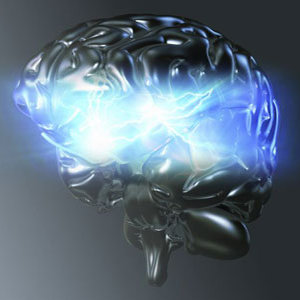Neurobiology of Emotional Mindfulness – The Mindful Brain :
Often times, all the chatter about mindfulness can sound like so much psychobabble. Let’s face it, it is all the rage and is a term being applied to all manner of human interests and endeavor. I am a therapist, but also a scientist. Therefore it is important that our constructs and tools be testable utilizing experimental methods. In this manner, we can expand the power and range of application. Recent years has shown great technological advances that allow for increased power in our ability to look inside the living brain as it responds to various stimuli.
Research, employing these new technologies have uncovered some important findings regarding the brain as it engages in mindfulness and/or meditation exercises. So for example one study by Sara Lazar and her group at the Psychiatric Neuroimaging Research Program at Massachusetts General Hospital revealed actual structural changes in the brain as a result of mindfulness practice. Lazar took a group of experienced mindfulness practitioners and a matched control group that had no meditation experience, and they measured the thickness of their cerebral cortex. They found that the parts of the brain involved in self-reflection and empathy were significantly thicker in the meditators than in controls.
Another important study was done by Richard Davidson and his team at the Laboratory for Affective Neuroscience at the University of Wisconsin. Davidson wanted to know whether mindfulness practice would shift the brain of the practitioners to having more left-sided prefrontal activation. Davidson found that 8 weeks of mindfulness practice increased left-sided prefrontal activation both at baseline and in response to emotional stimuli. This is consistent with other research showing that more left-sided prefrontal activation is associated with more adaptive responses to negative or stressful life events. Davidson’s work was the first to show that meditation could bring about this effect. They also observed that this shift towards increased left sided activation was associated with significant reductions in anxiety and negative affect in the meditation group.
To me, the most important and compelling line of research was conducted Matthew Lieberman,PhD and his colleagues at UCLA. One if the most critical aspects of mindfulness, especially when it comes to emotional mindfulness, is the ability to label one’s immediate emotional experience. So, when one is experiencing emotional distress, mindfulness based interventions often involve simply regarding one’s own emotional experience with opennss and non-judgement and labeling in words the name of the emotions as they pass through one’s awareness. So if one is experiencing fear, they simple internally label and watch the experience of fear. Same with sadness, anger, shame and so on. Utilizing Functional Magnetic resonance Imaging (FMRI), Lieberman et al investigated the effects of emotional labeling on certain aspects of brain functioning. They found that the participants who were asked to label theor emotions in response to emotionally charged images, showed increased activity in specific regions of the prefrontal cortex (right ventrolateral pre frontal cortex or RVPFC). Furthermore, this activity seemed to suppress activity in the participant’s amygdala, a region of the limbic system or so called reptilian brain that is often associated with reaction to perceived environmental threats (flight of fight). Thus, it appears that emotional labeling may serve to diminish emotional reactivity in the centers and pathways in the brain that typically provoke such emotional responses.
In the next blog post, I will discuss more the critical implication of these findings for psychotherapies rooted in the practice of emotional mindfulness.





